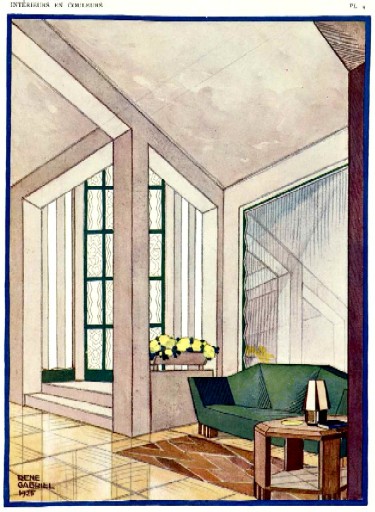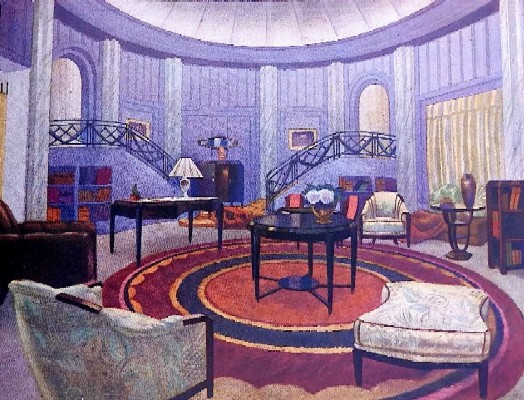
 This page was created to collect articles concerned with what is popularly called the Art Deco and the Streamline Moderne movements which appeared in the Facebook group Art Deco and Streamline Moderne Home Decor. The group was designed to provide ideas and inspiration to those seeking to decorate their homes in these styles. Initially it was primarily about showing images of accessories, appliances, artwork, doors, furniture, lighting, millwork, stairways, windows and window dressings and overall room designs.
This page was created to collect articles concerned with what is popularly called the Art Deco and the Streamline Moderne movements which appeared in the Facebook group Art Deco and Streamline Moderne Home Decor. The group was designed to provide ideas and inspiration to those seeking to decorate their homes in these styles. Initially it was primarily about showing images of accessories, appliances, artwork, doors, furniture, lighting, millwork, stairways, windows and window dressings and overall room designs.
As my research progressed, I became more aware of the jarring differences in what is broadly labeled as 'Art Deco', particularly as seen in the output of different artists, countries, philosophical substyles and sub-periods. My experience suggests these things are deeper than just a decor style and are rarely explained by websites which try to define 'Art Deco style' in 10 bullet points or less. As a result, I began to research the ideas behind these movements and look more closely at the lives and ideas of the artists who were active in the interwar years of the 1920s and 1930s in the Facebook group.
These differences can be seen in the two images selected for this page. Both are from the same book, Interieurs en Couleurs, a book published in 1926 which contained the artist's renederings of their designs for room at the touchstone Exposition internationale des arts d?coratifs et industriels modernes held in Paris in 1925. (This is often pointed to as the origin of the Art Deco style. The phrase was apparently derived from arts decoratifs. Yet the style has most of its origins in the late 1910s and early 1920s. 1925 was just when the French were able to showcase it..)
The first image (at left) is plate 9 from Interieurs, showing a vestibule designed by Elise and Georges Djo. It has a distinct Cubist
 flair, containing a variety of straight lines and angles, two characteristics often suggested to be found in Art Deco designs. The colors are rather muted browns and off whites, relieved somewhat by the dark green Cubist couch. The second image (seen at right) is plate 15, showing studio or office designed by Lucie Renaudot. It is filled with curves and furniture evoking a more classical French style, something for which Renaudot was known. It pops with purple, red, orange and yellow colors. We gave two different styles, found at the same event, created around the smae time by different people. Yet they are both placed in the same style - Art Deco. This is what interested me as I researched the style. So I started posting short commentaries on different aspects and theories behind this design style.
flair, containing a variety of straight lines and angles, two characteristics often suggested to be found in Art Deco designs. The colors are rather muted browns and off whites, relieved somewhat by the dark green Cubist couch. The second image (seen at right) is plate 15, showing studio or office designed by Lucie Renaudot. It is filled with curves and furniture evoking a more classical French style, something for which Renaudot was known. It pops with purple, red, orange and yellow colors. We gave two different styles, found at the same event, created around the smae time by different people. Yet they are both placed in the same style - Art Deco. This is what interested me as I researched the style. So I started posting short commentaries on different aspects and theories behind this design style.
Unfortunately, the importance of recent postings over older ones and the focus on images over content on social media proved to be a poor platform for these short articles. Since some of them required a large amount of time and research to write, I thought it best to give them a more permanent home on the web. The articles have been broadly divided into two categories: design and artists. They can be accessed above in the menu. The articles contain references (and, where appropriate, links) so that those interested in performing further research can find the resources I used.
Neither Art Deco nor Streamline Moderne are well-defined, both having grown through the efforts of different people with different ideas. Hopefully this web page will provide some insight into the variety of people, influences and ideas which are broadly classed under these two names.